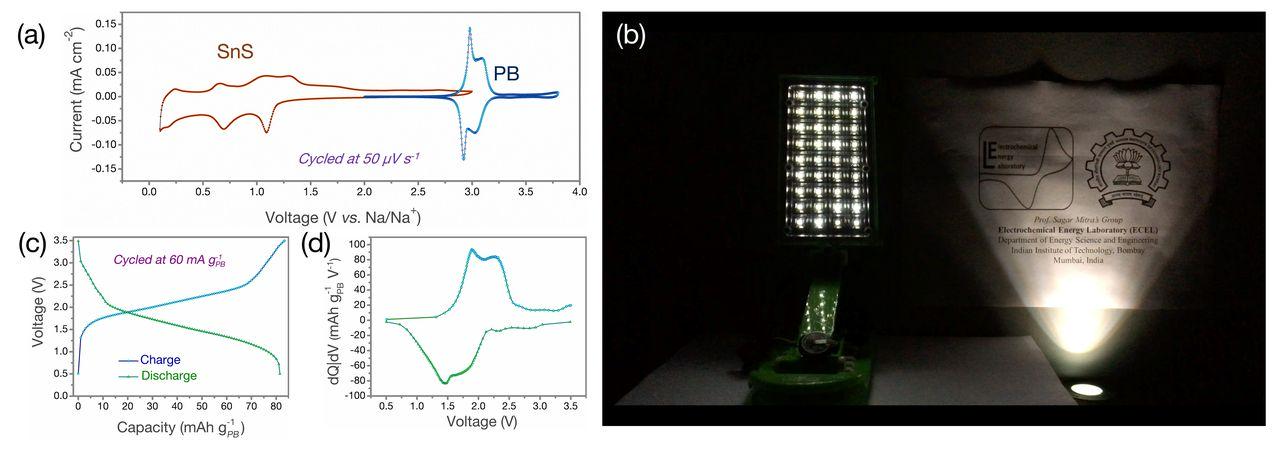This invention describes a new method for producing a safe and scalable anode material for sodium-ion batteries. The method offers a significant improvement over existing techniques by providing a faster, more cost-effective way to create high-performing batteries.
Figure 1. Na-Ion Full Cell: Electrochemical Study Using Prussian Blue Cathode and Tin Sulphide (SnS) Anode with Additive-Free Ether-Based Electrolyte System: The cathode works nearly 3 V vs. metallic sodium while the anode works mostly below 1.2 V (Fig. 1a). Hence, the overall combination produces an average of 1.8 V full cell (Fig. 1d). Capacity coming from the full cell is nearly 80 mAh g-1PB (Fig 1c) which corresponds to 135 Wh Kg-1 for the gravimetric energy density. Fig. 1b demonstrates that a single coin cell is capable of powering a LED lamp.
Traditional sodium-ion batteries can be unsafe due to dendrite formation, which can lead to short circuits and fires. Additionally, existing production methods are often slow and expensive.
- Utilization of silica sand coated with materials like glucose or coal-tar
- Pre-sodiation technique to balance electrode capacities
- Scalable production methods increase material yield by 2.5 times compared to previous patents
- Enhanced safety and lower production costs due to the use of low-cost components
- Dendrite-free battery design using carbon nanofiber with ether-based electrolytes
The prototype includes a negative electrode material produced via the described method, capable of yielding 65 grams of anode material and 30 grams of cathode material per liter of solution.
The technology is at an advanced development stage, with the production process scaled up significantly. It has been optimized to address safety and efficiency issues commonly associated with sodium-ion batteries.
4
This invention has the potential to revolutionize the battery industry by providing a safe, cost-effective, and high-performance sodium-ion battery solution, thereby promoting wider adoption of energy storage solutions.
- Battery manufacturing
- Renewable energy storage
- Grid storage
- UPS systems
- Large charging stations
Geography of IP
Type of IP
201921014483
500267

